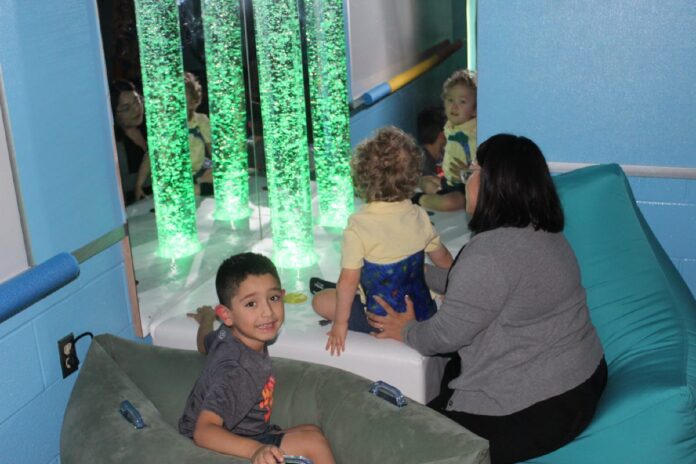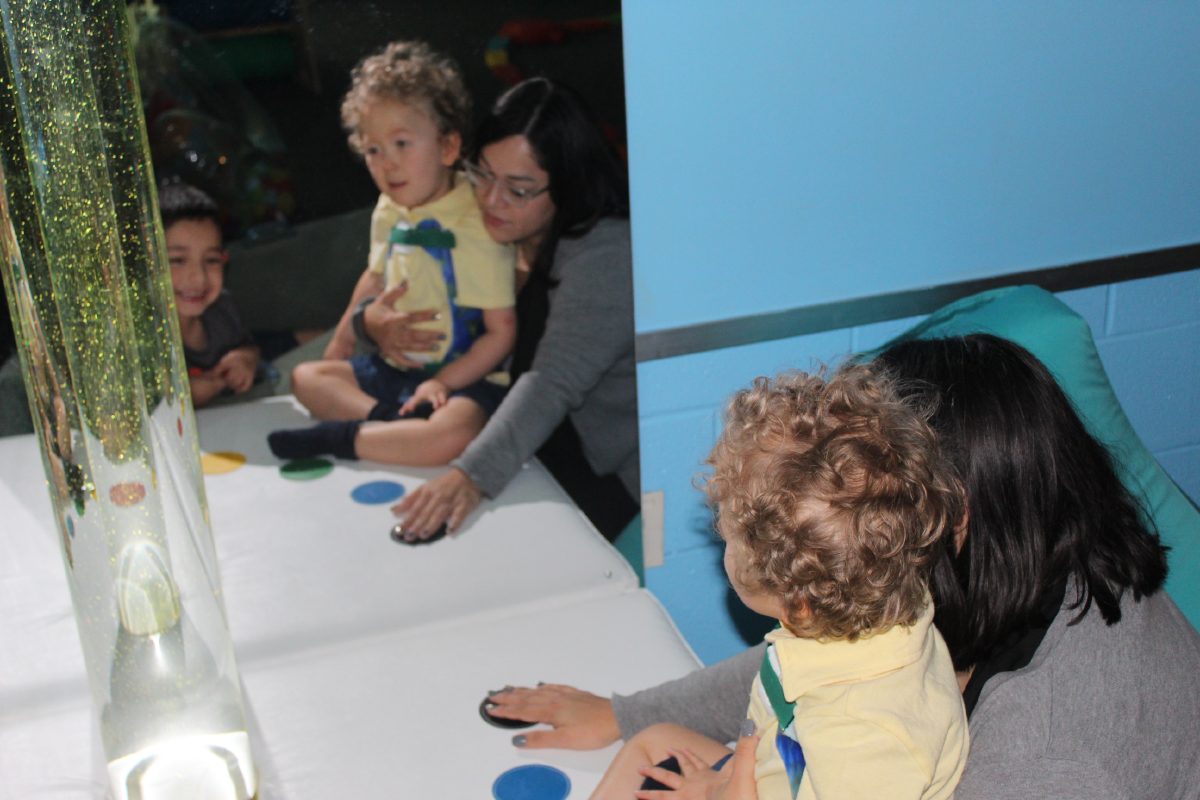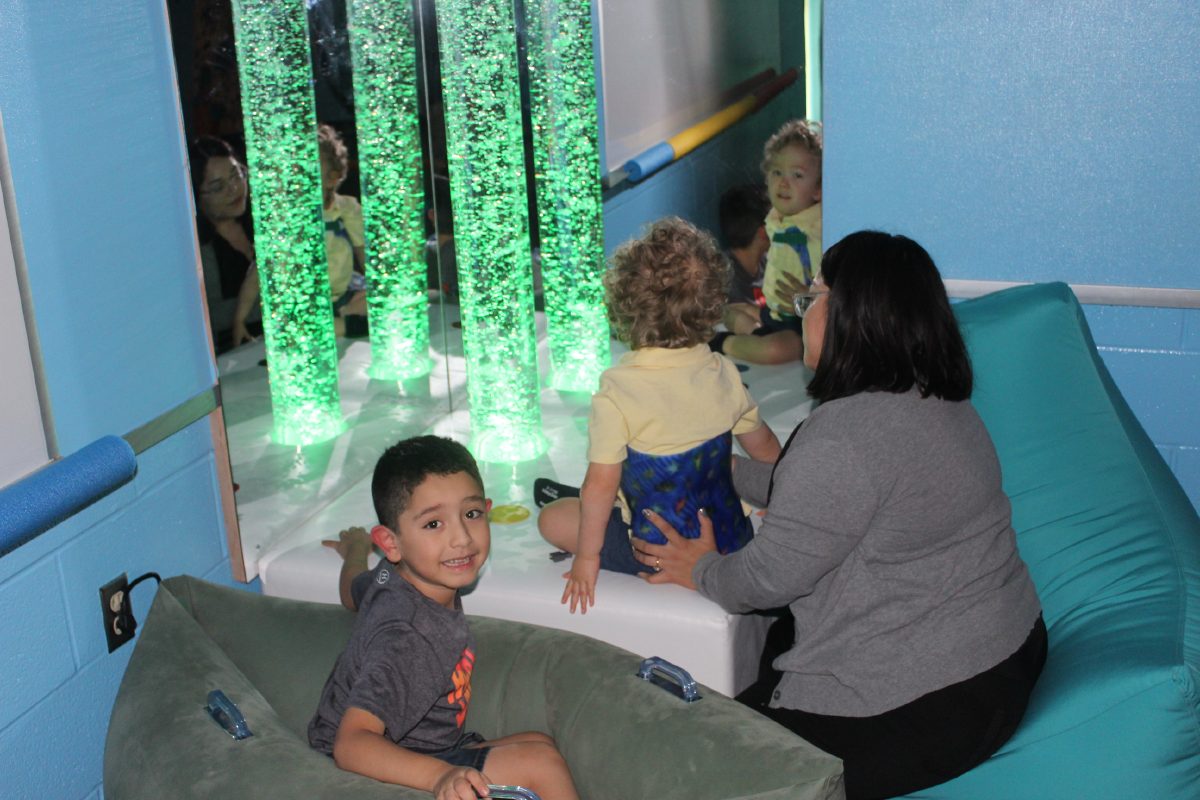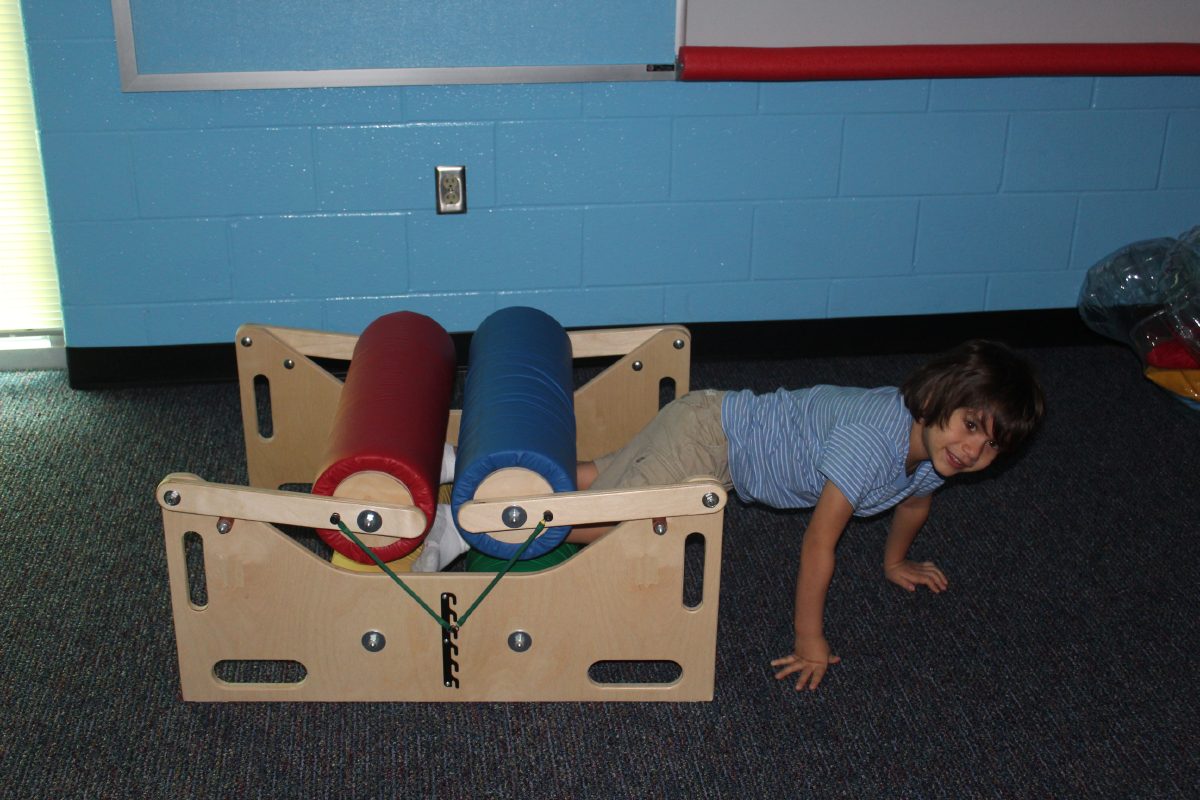HARLINGEN — “Levi, rollers,” directed the teacher.
Levi Medina, 4, quickly dove beneath a red roller and a blue roller, a smile spreading across his face as he felt them move across his back.
Levi and several other children were spending time in the “Sensory Room” at Dr. Rodriguez Elementary School, one of five that just opened in the Harlingen school district.
A sort of mystical quality seemed to pervade the dim-lit room, where a young girl toyed with small mini-lights and another swung in a cushioned chair. Jack Resendez, 4, gazed with transfixed fascination at bubbles rising through tubes while changing from red, to amber, to emerald green and lavender.
“This is for our children with disabilities,” said Laura Mancilla, teacher for the preschool program for children with disabilities at Rodriguez.
“It provides them a place to kind of relax and get what they need in an environment that’s safe and quiet,” Mancilla said. “They don’t have the sounds of the classrooms, the chairs, that type of thing.”
Sensory rooms opened this school year at five elementary schools: Long, Ben Milam, Zavala, Sam Houston and Rodriguez. More are expected at other schools to fill a critical need, said Dan Garza, director of special education for the district.
“We felt a lot of our kids had sensory needs that weren’t being met,” Garza said. “These are students who have trouble transitioning into the classroom, students who were having trouble focusing. So we knew something needed to be done.”
Each sensory room cost between $10,000 and $15,000. Some of that was paid for through Tax Ratification Election funds. But the Harlingen Area Educational Foundation also provided a $1,000 grant for each room. Garza said the district was very grateful for this extra support.
Garza explained it’s hard sometimes to gauge exactly what special needs students, well, need or want.
“Most, not all, of our students who use the sensory rooms are nonverbal,” Garza said. “A lot of times they can’t tell us what they need or what they’re feeling.”
But the benefit is obvious.
“They’ve become more attentive and more prepared for instruction,” Garza said. “It’s some place where it’s calm, music playing, there are tactile things.”
Levi came and stood on some tiles that seemed to have a sort of thick liquid of different colors. As he stood on them or pressed them with his hands, the colors shifted into changing patterns.
“When they step on those tiles, it gives them a little bit of cushion so you can see the little patterns they make,” Mancilla said. “It gives them sensory input through their feet or through their hands as they’re pushing down.”
Soon Levi was off to the next activity. Mancilla gestured toward Jack and another boy sitting next to the tubes with the bubbles.
“Again, it’s all sensory input,” she said, “whether it’s them hearing it or watching the bubbles. We have some children that actually sit against the tubes and put their faces against it so they can feel the bubbles as they rise.”
A broad range of students use the room, including those in life skills classes. They may have autism, Down syndrome, or other intellectual challenges. They may have physical conditions like Jack, who suffers from spinal muscular atrophy.
“It’s a disease that affects all his muscles,” said Apolonia Coronado, his full-time nurse.
“He’s doing really well for his condition,” she said as Jack, his blond curls framing his face, stared at the bubbles.
“I think he enjoys being more included in things and this room is very safe for him,” Coronado said. “It gives him the chance to explore a lot of things that he normally wouldn’t have access to in a general population classroom.”
The kids spoke very little as they explored the different senses available in the room. But when they did manage to speak, they got right to the point.
When someone asked a boy how he liked walking along a line of colorful stepping stones, he replied quite matter-of-factly, “It’s very cool.”









